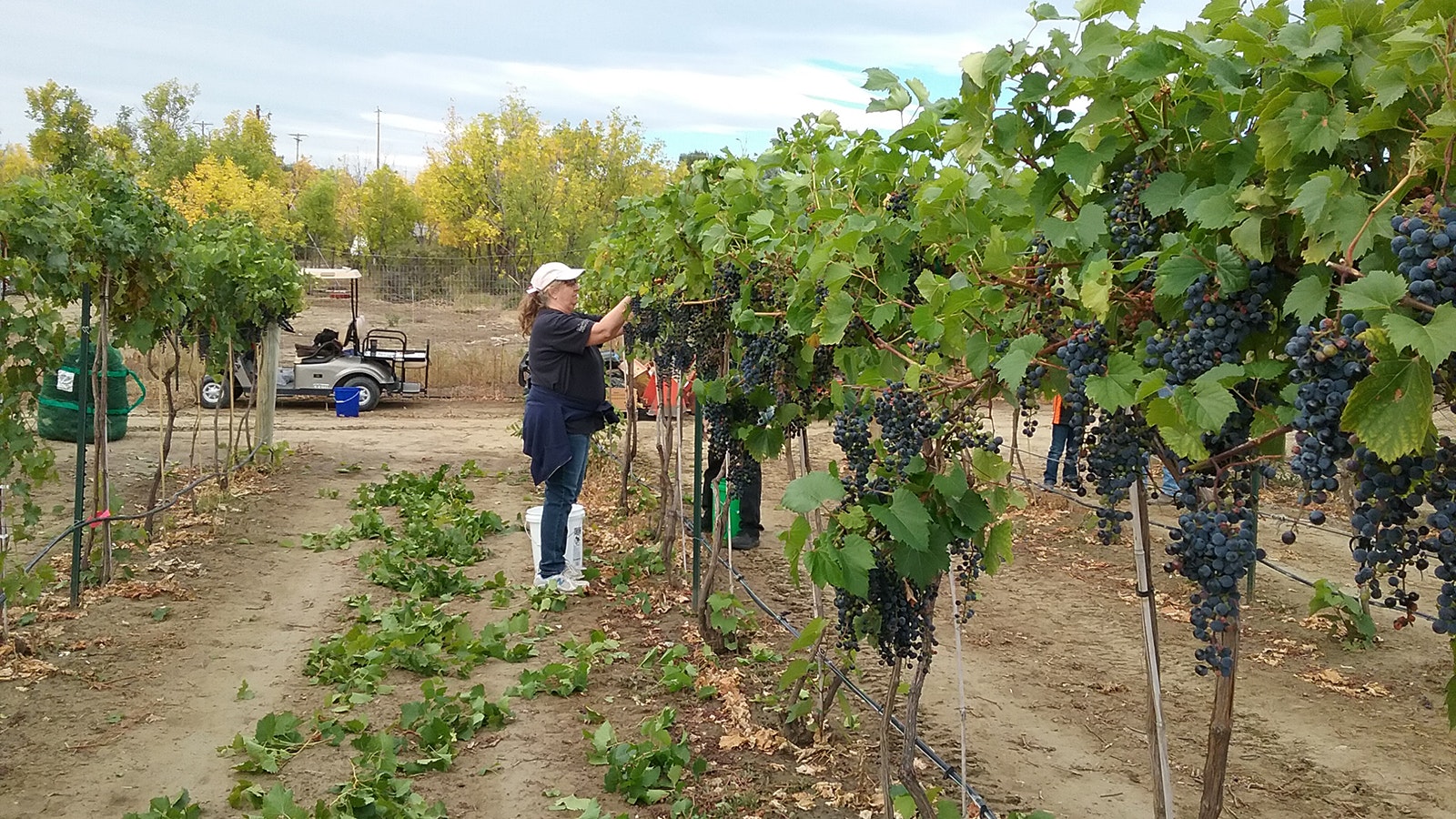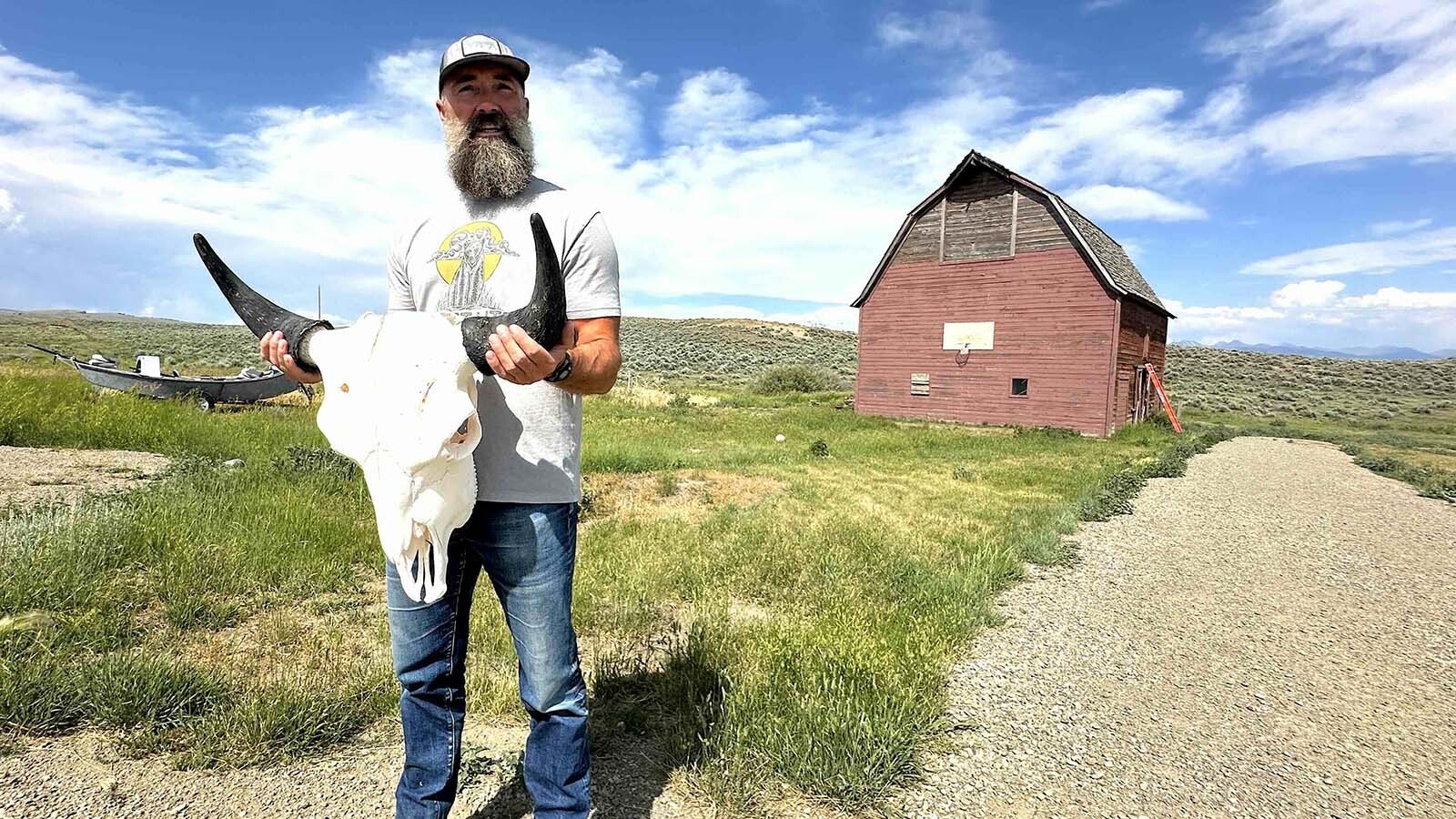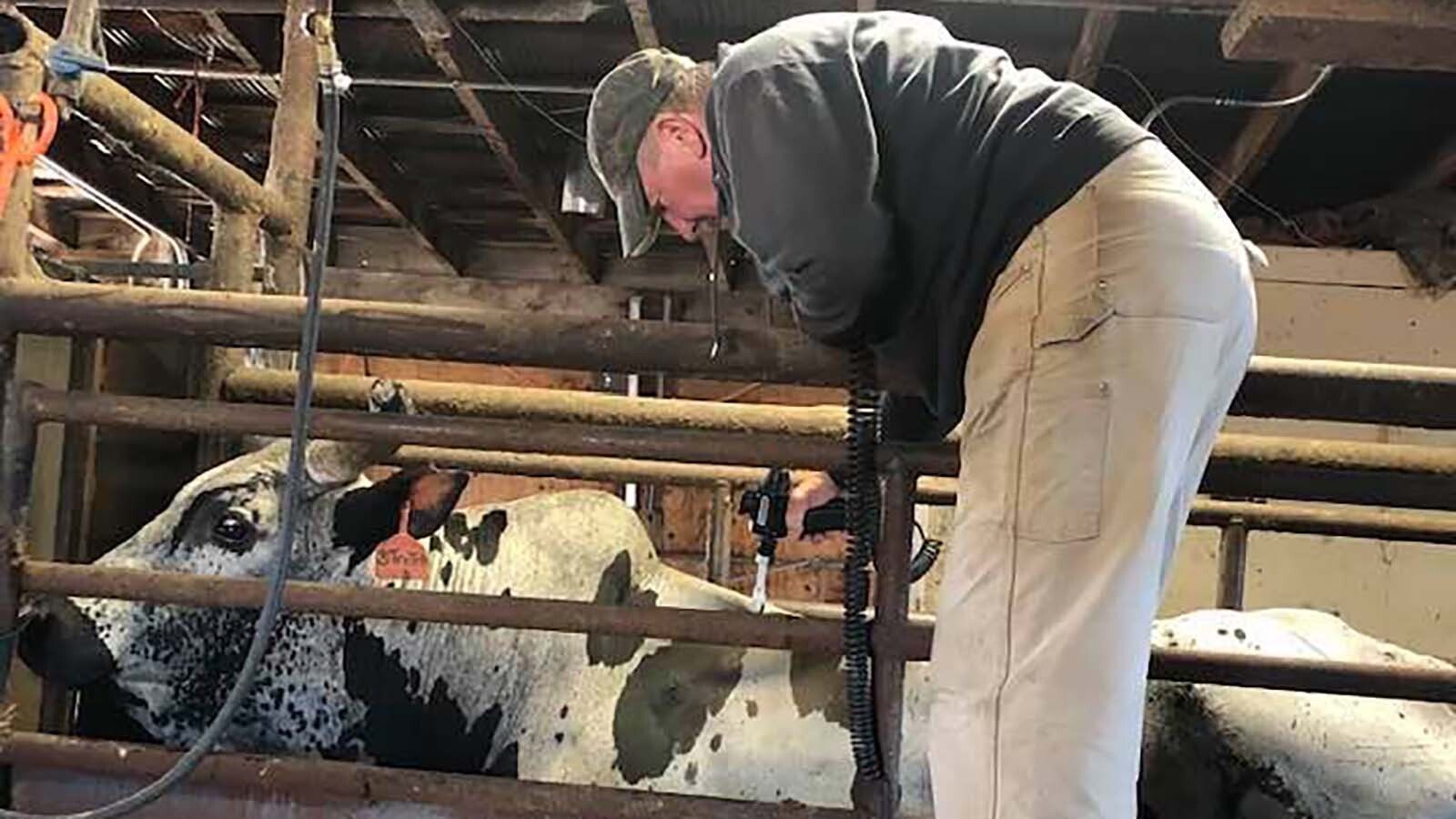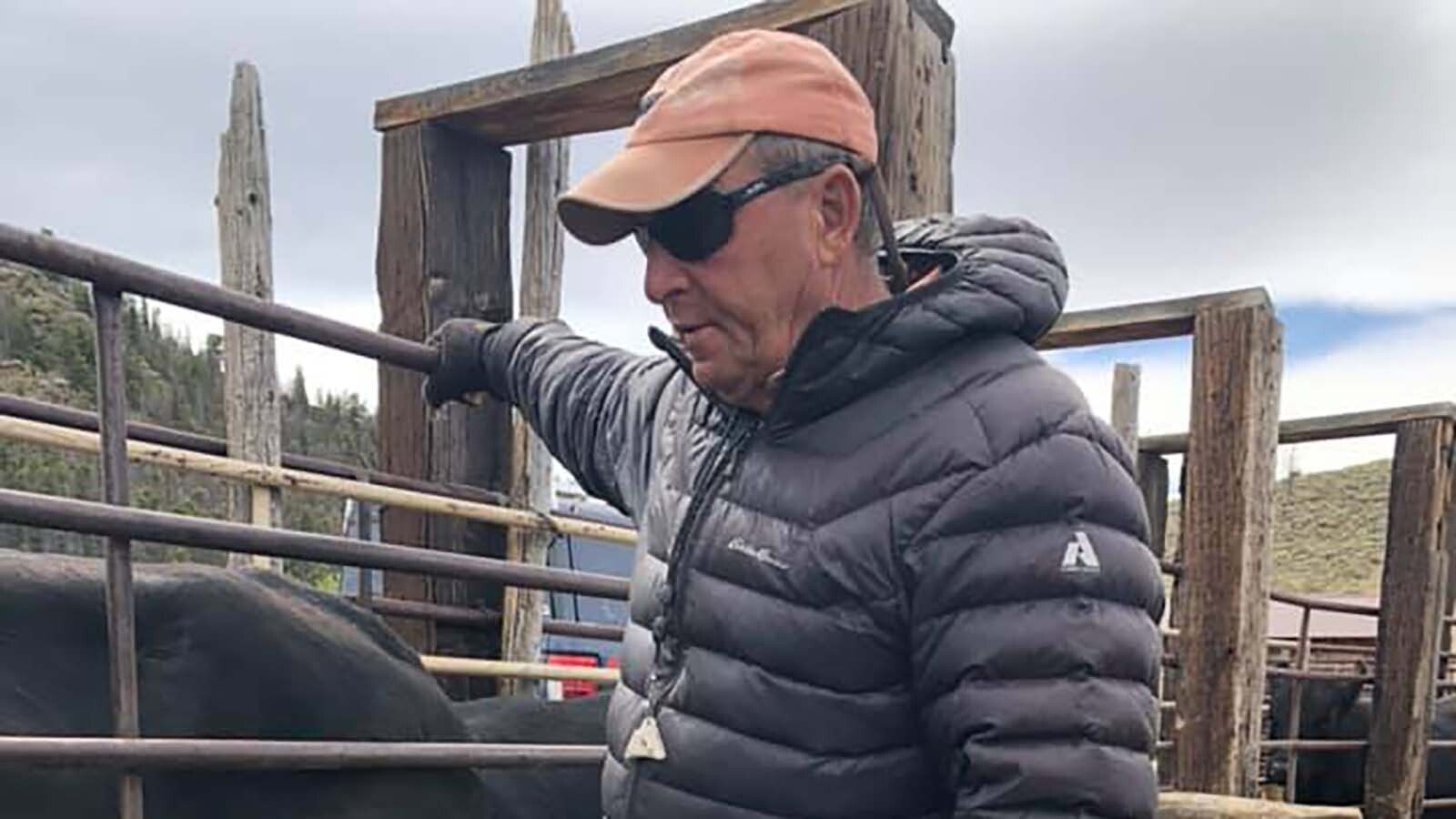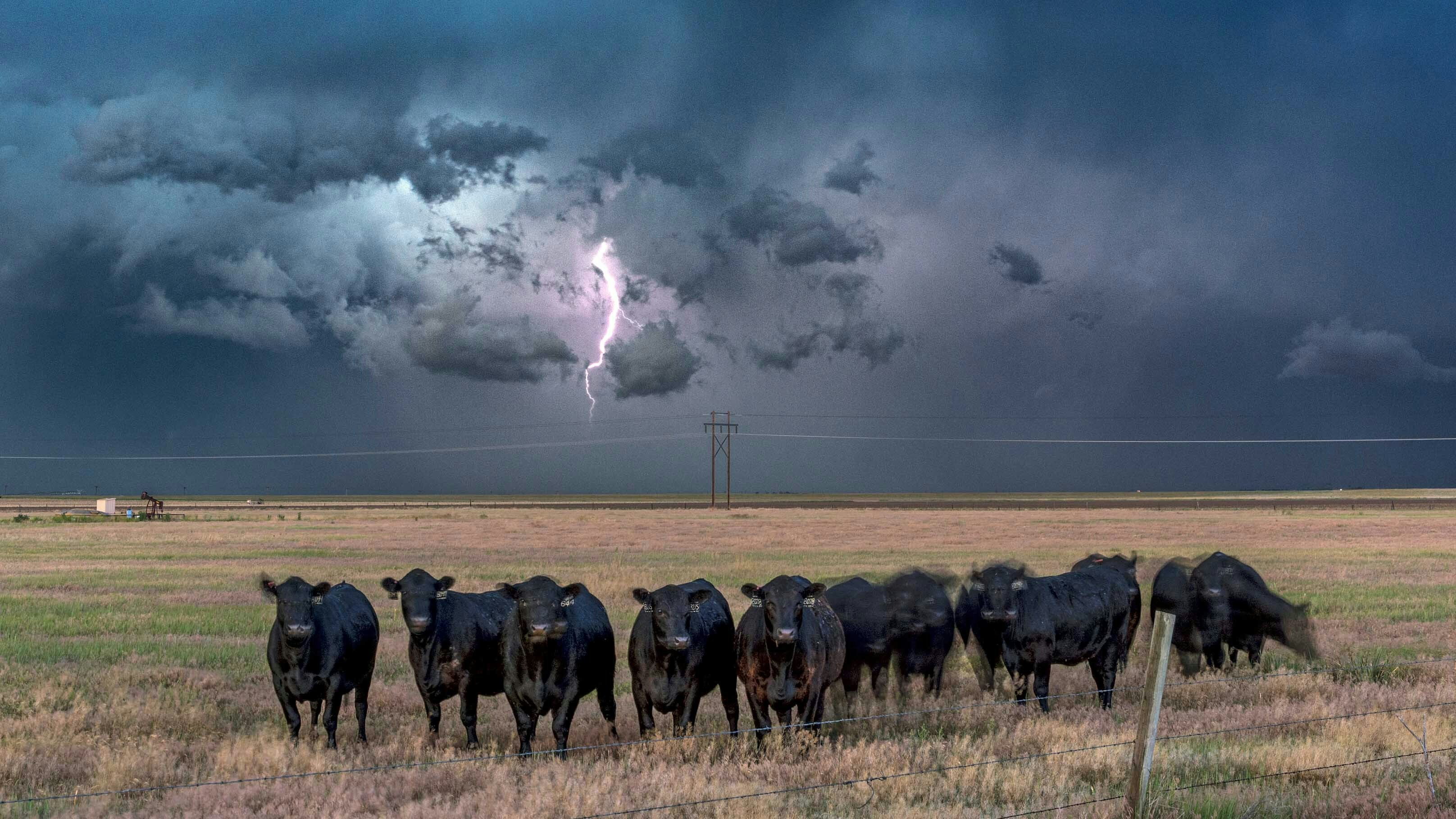It takes a hardy sort to grow grapes in Wyoming. Someone who’s not afraid to take a few risks and make a few mistakes along the way.
It doesn’t hurt to also be just a little on the stubborn side.
That’s because the wind and the cold and a short growing season all join forces against the gardener’s dream of growing grapes in Wyoming.
“You’re just out in the wide open with all the wind that comes through Wyoming,” Nicole Laffin told Cowboy State Daily. “That’s really our biggest enemy. It’s not even the cold. It’s the wind. The wind is our No. 1 problem.”
Laffin and her family operate Mustang Mountain Winery in Big Horn County. The winery began in 2019 — just before the COVID-19 pandemic hit — although the grapes were first planted by her parents in 2010.
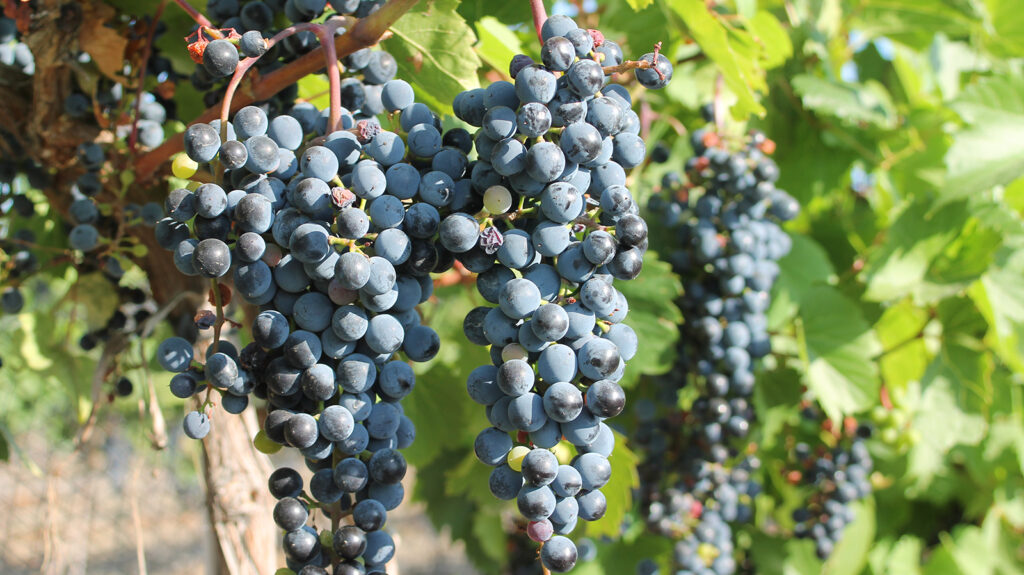
The grapes were a retirement project for her parents, but expanded into a small winery as Laffin, too, became interested in growing grapes and making wines.
Lots of lessons were learned along the way. The first — and most important — is that in Wyoming, wind is king.
“When we started out, we tried an artificial windbreak,” Laffin recalls. “We put up some material on the fence line, and the wind just turned it into a sail. It was terrible, and it actually blew the fence down.”
Since then, Laffin and her family have begun growing a natural windbreak with plum trees, lilac bushes and a few chokecherries. It will be both pretty and practical, Laffin hopes — though her mother has dreams of making plum-chokecherry wine one day, which will no doubt be plum delicious.
In the meantime, Laffin confesses that the family puts up bird netting nearly every summer, and not just to keep birds from stealing all the fruit.
“The wind will come through and snap the tendrils and vines,” Laffin said. “If we put the bird netting on there, it kind of helps keep everything in there nice and tight and keeps it from flailing.”
Location, Location, Location
It’s trite but catchy — and true of grapes as well. Location for grapes is key.
Grapes need full sunlight to be productive, but in a high elevation county, solar exposure can be intense and the plants might burn.
In those cases, some late afternoon shade may help the situation.
“If I’m in a cool area, or I don’t have the ideal situation for my vines – I’m on a north-facing slope that’s cooler and doesn’t get full sunlight – I want to put them in as much direct sunlight as I can and warm that place up,” University of Wyoming Extension Agriculture Agent Jeremiah Vardiman explained to a group of interested grape growers during a recent garden-to-market conference in Cheyenne. “It can be very situational where you’re at.”
Placing vines up on a hillside, meanwhile, can help protect them from pooling cold during the spring months when weather is inconsistent. Cold air sinks, warm air rises.
The right pruning and training practices also help keep buds higher up, in warmer air, increasing the chances of production.
While it’s just a few degrees, that can be the difference between productive vines or frostbitten, dead buds.
Grapes are tolerant of a range of soils, but they don’t like wet feet. That’s a bonus in Wyoming — it means they are drought tolerant once established.
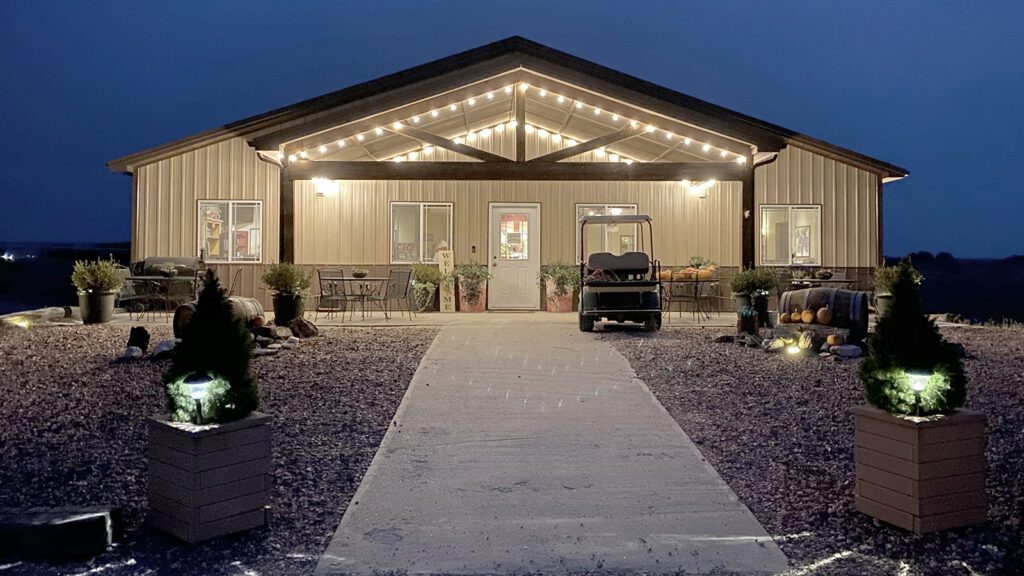



Longevity Still A Question
In Europe, many grape vines live a century or longer, but in Wyoming no one knows if that longevity will translate. Wyoming has to grow cold-hardy varieties, most of which were developed through University of Minnesota research, and these are relatively new on the scene.
Some of Wyoming’s oldest known grape vines are growing on a farm in Goshen County, and they’re just 22 years old.
Already grower Patrick Zimmerer is seeing some signs of decreased productivity, so he wonders if the cold means it will soon be time to replant some of the vines in his vineyard.
The variety in question is Valiant, however, and one of few not from Minnesota. According to Zimmerer, that was developed by someone in South Dakota.
How Zimmerer came to be a grape grower is kind of a funny story. He was home for winter break working on a thesis for his economics major with University of Wyoming, in between feeding cattle.
One day, the tractor broke down mid-feeding, so the family decided to pop over to University of Nebraska — their farm is right on the state line — and check out a class on growing grapes in Nebraska.
“I was kind of excited to kind of learn about how the heck can they even grow here, because it didn’t even seem possible,” Zimmerer recalled.
After the presentation, Zimmerer threw out the thesis he’d been working on for over half the year. He wrote instead about growing grapes in eastern Wyoming.
“Then my dad said we did all that work, maybe we should plant a vineyard,” Zimmerer recalled.
In 2001, Zimmerer and his family planted their first vineyard with 300 cold-hardy grapevines. They were whatever was left over in Minnesota’s research basement.
As Zimmerer recalls it, demand was so high for Minnesota grapes at the time, nothing else was left of the more advanced breeds. Ordinarily, the leftovers wouldn’t have been given out to anyone, but the researchers were just impressed that someone from Wyoming was trying to grow grapes at all.
“We just started out knowing nothing, and here we are all those years later,” Zimmerer said.
Trial And Many Errors
A winery was never in the family’s plan. They were planting grape vines into unused pivot corners, which are dry, unirrigated and generally non-productive spaces.
“That was kind of the whole point of the thesis, being able to utilize parts of a farm that weren’t being utilized,” Zimmerer said. “Being able to do something with that small acre, you know, to provide some production.”
They had worked out a deal to sell their grapes, once they came into production, to a winery in Cheyenne. But four to six months from their first harvest, the winery closed up shop.
“So we had about four years’ worth of vineyards ready to come online,” Zimmerer recalled. “But there went our market.”
Zimmerer and his sister created a business plan out of Zimmerer’s thesis for Wyoming University’s 10K Business Plan Competition.
“We beat out 20 other teams with our winery business plan, and that gave us a little seed money to get going,” Zimmerer said. “We had about a four-month window where we just quickly became a winery, without any clue what we were doing.”

Going Grapes Means Going The Distance
Laffin’s Mustang Mountain and Zimmerer’s Table Mountain are the only two wineries Vardiman knows of in the Cowboy State that grow their own grapes and make their own wines.
There are other wineries, but most don’t try to grow their own grapes.
Both Laffin and Zimmerer have had to travel a bit to learn to become vintners, on top of the learning curve that comes with growing grapes in Wyoming.
“We went and got a home wine kit,” Zimmerer recalled. “I don’t even remember where, Cheyenne or Denver or somewhere. Then we did a lot of work with University of Nebraska and their association.”
Laffin, meanwhile, is getting a winemaker’s certification through Texas Tech University. That’s allowed her to tour a few wineries in Texas, and she’s also visited a few in Montana.
As both have discovered, there aren’t many local resources for growers who want to become vintners, but by remaining small and vertically integrating their operations, they’ve still managed to create profitable enterprises in Wyoming —despite the lack of logistical resources and supply.
That suggests the potential for more wineries is out there, but both will be the first to admit that grape growing is a lot of work, even if owning a winery is kind of fun.
“But anybody who wants to grow, we definitely really kind of work with them, or at least tell them what not to do,” Zimmerer said.
A few growers around Zimmerer have tried his idea for grapes in the pivot corner. That provides him with an extra source of Wyoming grapes to buy for his winery.
Vardiman, too, is ready to be a resource for those who are persistent enough to want to grow their own grapes in Wyoming.
“I’m not necessarily trying to grow a grape industry in Wyoming,” he said. “My focus is on sharing the knowledge and information collected at the research centers with grape enthusiasts and novice growers in Wyoming, which provides them the best opportunity of being successful at growing grapes.”
In the Wine Box
Table Mountain Winery has in the past stocked its wines at DT’s and Vino’s in Cheyenne, as well as Town and Country on occasion. There’s also a satellite tasting room in Casper, as well as a retail shop at the winery. Other locations may be stocked in the future but have not yet been determined. The winery offers occasional events, like paint and sips.
Mustang Mountain Winery
Wines from here are offered online or at the winery.
The online store is taken down once the wines have sold out. Wines produced include a Malbec, Palomino, Forntenac and a Rose. By summer, they’ll have bottled their Brianna, La Crescent and a Summer Blend. They also plan to have some European-style hard apple cider for sale soon.

